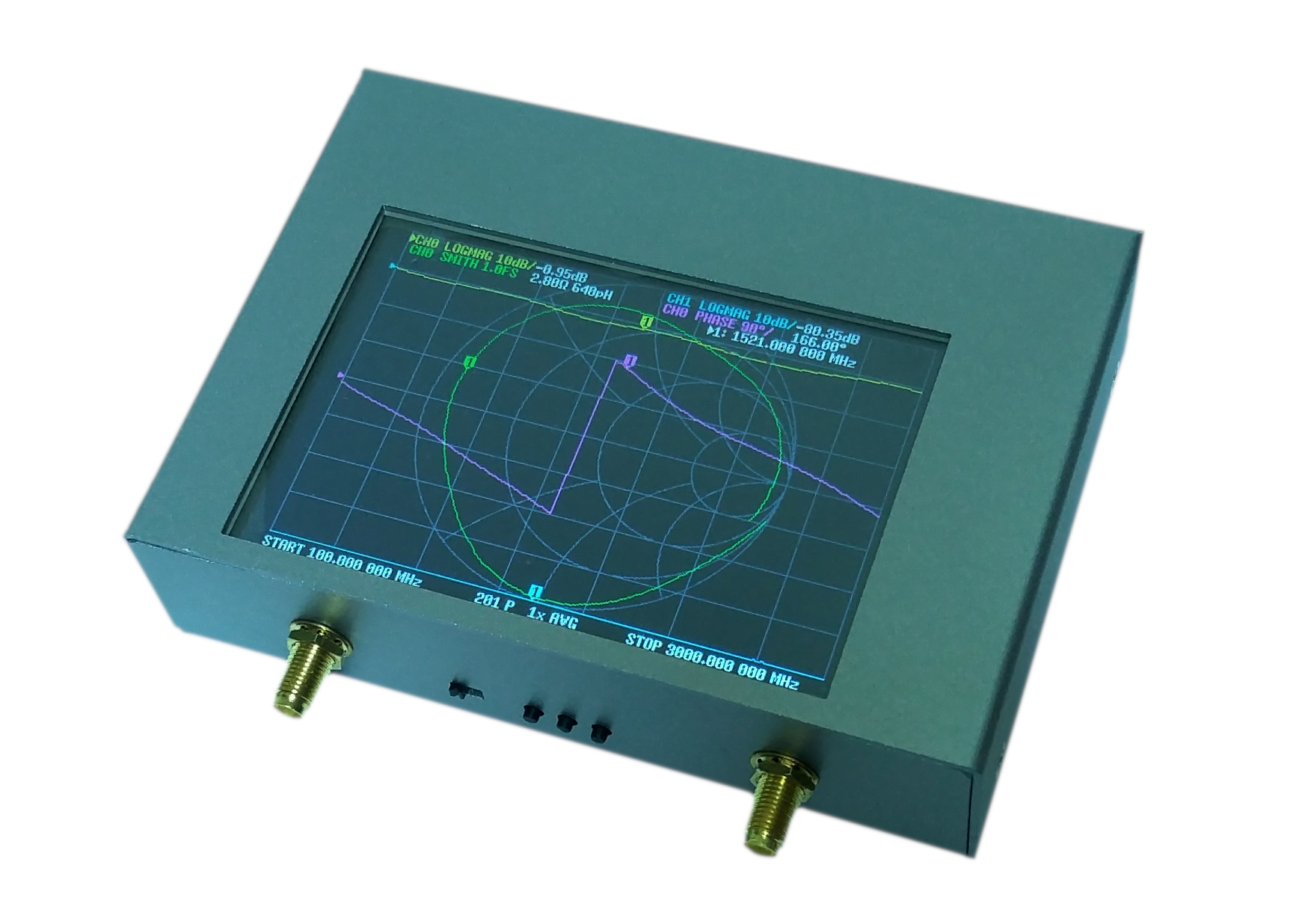
If a VNA is that simple, you might be asking why commercial ones are so expensive then, but the answer lies in the rather limited capabilities of the NanoVNA. It’s a surprisingly simple piece of hardware, with an Si5351 clock generator providing the phase-synchronous oscillators, a brace of three balanced mixers providing the RF-to-baseband downconversion, an I2S codec digitizing the measurements, and an STM32F07 ARM Cortex M0 microcontroller doing all the math and running the show. The NanoVNA originated a few years ago from, and has since been cloned in huge numbers by Chinese manufacturers.

The first playground for the NanoVNA, an RF demo board. Both oscillator and SDR are in perfect synchronisation so the device can keep track of phase as well as the rest of the measurements. Where the scalar analyser simply has an oscillator and a sensor, the VNA mates the oscillator with a reflectometer to measure impedance, and replaces the sensor with a software defined radio receiver. This type of analyser is refered to as a Scalar Network Analyser, and all the measuring device knows about the signal is its frequency and amplitude. So for example I was able to fire a set of frequencies at a filter in a previous Hackaday article using only a Raspberry Pi and an oscilloscope, but all I could measure was its bandwidth, I knew nothing about its impedance and the phase relationships between input and output. If you work with radio frequencies, it’s relatively easy to measure amplitudes, but usually very difficult to take phase and impedance measurements, especially across a wide frequency range.

But I’m a VNA newbie, what does a VNA do? A Quick VNA Primer The NanoVNA block diagram. My VNA is not a superlative piece of high-end instrumentation that cost the GDP of a small country, it’s the popular $50 NanoVNA that has a fairly modest frequency range and performance, but is still a functional VNA that can take useful measurements.

That instrument is a Vector Network Analyser, or VNA, and it’s worth spending a while going through the basics in case anyone else is in the same position. My new experience came when I bought a piece of test equipment, and for the first time in my life didn’t have a clue how to use it. I have a good idea what it does, and I can figure out whatever its interface may be to make it do what I want it to.

I probably received my first piece of test equipment – a multimeter – in the early 1980s, and since then every time I’ve received a new one, whether an oscilloscope, logic analyser, spectrum analyser or signal generator, I’ve been able to figure out how to use it. It’s never too late in life for new experiences, but there’s a new experience I had a few weeks ago that I wasn’t expecting.


 0 kommentar(er)
0 kommentar(er)
